CANADIAN NEWS January 22, 2025
To Dye For: Why Custom Colors Are Trending in Apparel
The uniqueness of garment dye and effects like mineral washes make custom colors an enticing proposition.
Key Takeaways
• Garment Dye Trend: The waning popularity of tie-dye paved the way for garment dye and mineral washes, which offer a vintage, distressed look and unique color effects.
• Customization and Inventory: Garment dyeing allows for custom colors in small batches, appealing to clients who want unique, branded apparel without large inventory commitments.
• Cost and Sustainability: While garment dyeing can be more expensive and less sustainable due to higher water usage, it offers flexibility and reduces the risk of excess inventory.
At the height of the pandemic, tie-dye was having a moment – a natural byproduct of the casual style and DIY activities that reigned supreme at the time. Fast-forward to 2025, and those bold spirals of swirling primary colors have gone the way of the sourdough starter.
“How we think about tie-dye – like the classic Grateful Dead T-shirt – has kind of waned,” says Milissa Gibson, sales director of Lane Seven Apparel (asi/66246). “But what it did leave behind was a giant opening for garment dye and different effects like mineral washes.”
Most apparel in the promo industry is piece-dyed – with rolls of fabric treated with color before being cut and sewn into tees, tanks and other blanks. Garment dye, however, flips the process around, with dye houses taking a white prepared for dye (PFD) garment – usually 100% cotton or a cotton blend – and adding a custom color in small batches. While piece-dyeing results in a uniform hue, garment dyeing often creates a more vintage, distressed look, since the dye may distribute differently on different textures (collecting at the seams or ribbed collar, for instance).
36%
How much of the textile supply chain’s climate impact occurs during the dyeing and finishing process, primarily due to the energy required for heating water and drying fabrics. Many apparel makers are seeking out certified lower-impact dyeing methods and dyes.
(NIH)
“It’s a great way to make a really unique piece,” says Nick Santo, director of operations at Culture Studio (asi/532911), an apparel decorator headquartered in Chicago that serves entertainment clients among other markets. “With a custom-dyed shirt, every piece is different. Every piece is going to be individual, yet within a variance. It’s a great way to enhance your brand.”
Of course, garment dye is hardly a new phenomenon. Barry Chouinard created his first collection of dyed garments in rural Vermont in the late 1970s, using his washing machine to create texture during the dyeing process. By the mid-1990s, he began marketing them under the Comfort Colors brand name, ultimately selling his company to Counselor Top 40 supplier Gildan (asi/56842) upon his retirement in 2015. Other apparel manufacturers have released their own takes on garment dye over the years as well.
The soft, lived-in feel and muted resortwear color palettes of garment dye hold appeal for a variety of end-markets. But even more paramount for many is the ability to create a custom color and look, without being on the hook for a ton of inventory.
“We’ve been working with some pretty large programs in the music merch world, and garment dye is definitely trending,” says Tim Gibson, president of sales at Vernon, CA-based US Standard Apparel (asi/93179). “Mainly because a lot of these artists want their own color. They don’t want one that’s on the open market. They like very specialized washes.”
The same goes for certain Fortune 500 tech companies, Tim Gibson adds: “They want something that’s a little different and a little more elevated than just your basic spot colors you can get off the shelf.”
Why Garment Dye
Royal Apparel (asi/83731), which focuses on USA-made apparel, recently launched Color Concierge, a service that allows customers to provide their desired PMS color code for custom garment dyeing on several PFD styles with a minimum order quantity of 288 units – a much smaller minimum than what the supplier required when it would create custom colors via the traditional piece-dyeing method.
With the garment-dyeing program, Royal Apparel can produce a lab dip (a fabric swatch showing how the chosen color will look and feel) within a week or two, says Glen Brumer, sales manager. Once Royal Apparel gets the go-ahead from a customer, the supplier can turn around a custom garment-dye order in about four weeks, since it already has PFDs on hand and ready to be colored. Piece-dyeing a roll of fabric for a custom color order, on the other hand, could take two months or longer, Brumer says.
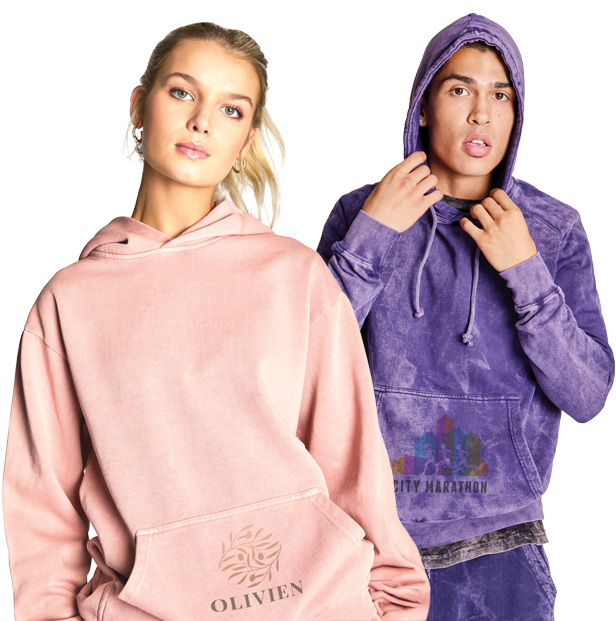
Garment-dyed offerings such as this urban hooded sweatshirt (LS16001) in salmon (left) and this vintage raglan hoodie (LST004) in cloud purple are both available from Lane Seven Apparel (asi/66246).
Urban Pullover Hoodie
Vintage Raglan Hoodie
“It opens up a lot more doors for customers who could never do the larger quantity custom color orders,” Brumer adds.
Lane Seven Apparel offers a similar local garment-dye program, dubbed The Color Project, allowing customers to choose from a curated selection of colors or submit their own PMS codes to (as their website states) “create something uniquely yours.”
Another factor in garment dye’s favor is inventory management. Retail consumers and end-buyers today have come to expect a vast rainbow of color choices – all with lightning-fast, Amazon-style results – but to support that model with stock apparel would require a massive amount of inventory, says Eric Henry, president of TS Designs, a B Corp-certified apparel decorator and garment dye house in North Carolina that’s working to scale U.S. production of natural garment dyes derived from substances like black walnut, while still working primarily in synthetic reactive dyes.
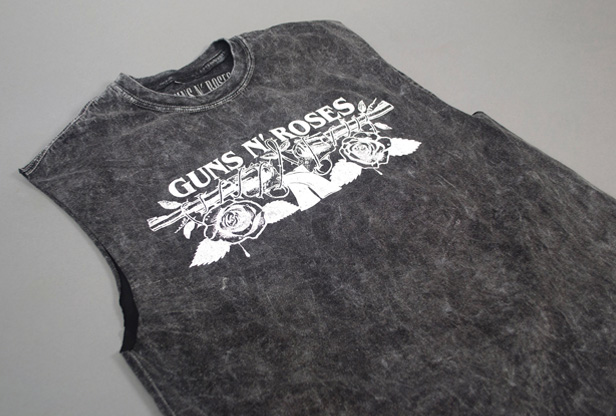
Mineral washes, like the one on this tee created by Culture Studio (asi/532911), give garments a coveted vintage look.
“That’s why we’re so bullish about garment dyeing,” he adds. “It takes that choice of color to the very end of your process.” That helps keep businesses from losing out on a sale when they don’t have the color a client wants, but it also lessens the risk of having to carry too much stock. “How many companies have gone out of business because they just had way too much inventory?” Henry asks.
Cost & Sustainability Considerations
Before going all-in on custom finishing techniques like garment dyeing, it’s important to consider the extra costs and other factors that distinguish them from choosing stock blank apparel.
“You’re adding an additional step to the process,” explains Milissa Gibson, about why garment dye is more expensive. A true PFD, she adds, is sewn with cotton thread and should be “massively out of spec” because it hasn’t yet been laundered and will shrink down to the proper size as it’s being dyed.
“You’re going to see wider tolerances overall,” she adds of the fabric. “And then because of that cotton thread, you’re going to see probably a little more damage than in the typical process. If you order 300 shirts, you could end up with 270. You could end up with 330.”
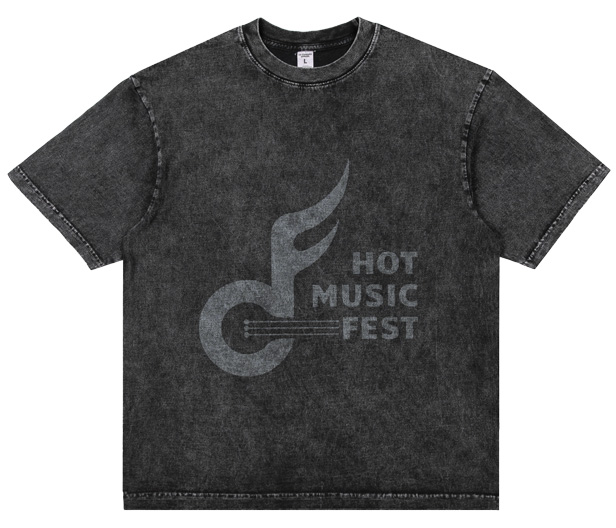
US Standard Apparel (asi/93179) offers garment-dyed tees (1551) in multiple colors as well as mineral wash, which is shown here.
Certain garment-dyeing techniques also result in more variance than others. Coloring a garment using fiber-reactive synthetic dye that directly bonds with the fabric will have greater consistency than using pigment dyes – which sit on top of the fabric, rather than adhering to the fibers – and other specialty washes. “You’re going to have highs and lows within your order because the garments are just sitting in a tub, going through the whole process,” Milissa Gibson says of pigment dyes and washes. “You have to set expectations early and know what the parameters are. If you’re working directly with a customer, be very clear about what could and couldn’t happen.”
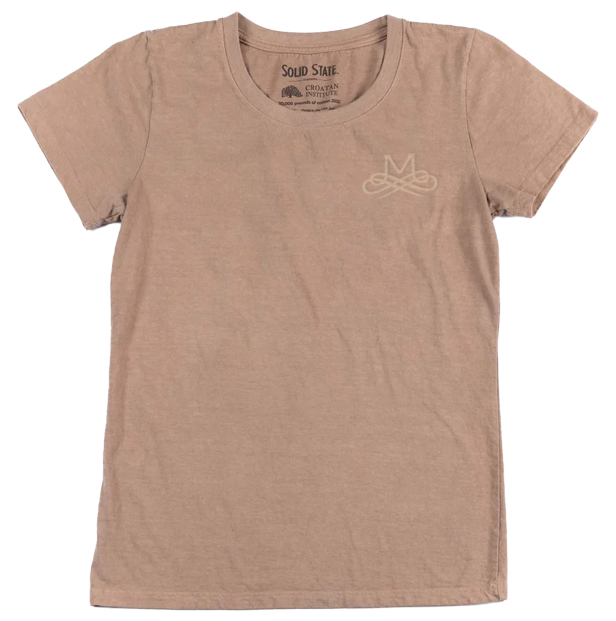
This garment-dyed T-shirt from TS Designs’ Solid State Clothing line is colored with a natural dye derived from black walnuts foraged near the company’s North Carolina production facility.
Another thing to consider is that garment and pigment dye are generally considered less sustainable than piece-dyeing, since the process uses around three times more water than the regular dye process, Milissa Gibson says.
Henry acknowledges that garment dyeing “gets a bad rap” because it’s not as efficient as piece dyeing, but he adds that it’s important to look at things holistically. Dyeing thousands of yards of color that are made into shirts where 30% of the inventory is never sold, and ultimately ends up in a landfill or incinerated, also has a negative environmental impact, he adds.
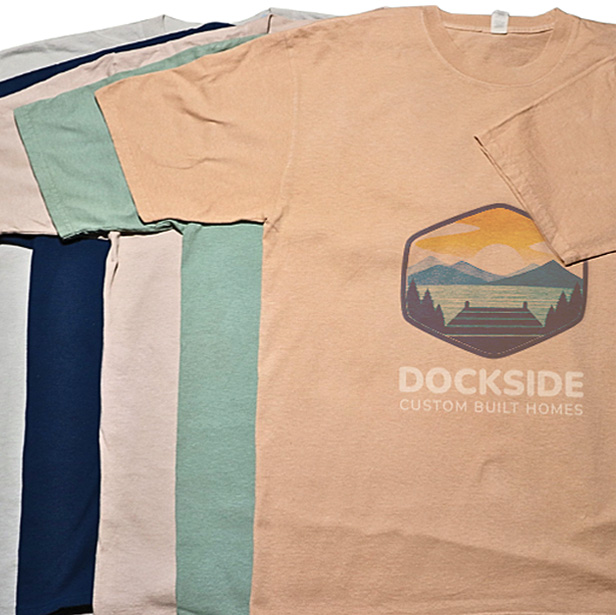
Royal Apparel (asi/83731) recently launched Color Concierge, a garment dye service that allows clients to order custom colors in small quantities.
TS Designs, which Henry describes as an “old-school dye house,” is also planning a purchase of new garment-dye equipment that should bring automation – as well as water and energy savings – to what currently is a manual and labor-intensive process, he says.
Gildan, earlier this year, also unveiled the proprietary Pigment Pure process for its Comfort Colors line, which the supplier explains uses a set palette of base colors that are mixed and matched into different shades, allowing it to maintain color consistency and offer strong printability. Plus, the supplier says, the process uses less water and reduces chemical discharge, compared to traditional methods. “When compared to reactive dyeing, the dyeing time is reduced by approximately 40% with Pigment Pure, allowing us to save on both water and energy,” Kevin Freeman, vice president of product merchandising and development at Gildan, said in a company blog post.
However you choose to explore color, there’s value in stepping away from the standard black or white tee – and exploring the possibility of creating custom colors to match a client’s ethos. “Have fun with it,” Milissa Gibson says. “Color can be part of the branding story.”

Common Dye & Finishing Terms
There are a variety of dyes, washes and other finishing methods associated with apparel. Here’s a glossary of some of the more common terms and techniques.
Acid wash: Garments are tumbled in a dryer with pumice stones soaked in a bleaching solution, creating sharp contrasts in the fabric. Often associated with 1980s-era denim.
Cationic-dyed polyester: A modified form of polyester that can be dyed at a lower temperature than regular polyester and produces brilliant colors. Tends to have better colorfastness and be less prone to bleeding than other synthetic fabrics but is generally also more expensive.
Disperse dye: A dye type specifically formulated for synthetic fibers like polyester, nylon and acetate. Disperse dyes are water-insoluble, making them ideal for synthetics, as they penetrate the fiber at high temperatures, resulting in vibrant, durable colors.
Dope dyeing: Also known as “solution dyeing,” this process incorporates pigments directly into a synthetic fiber solution before it’s spun into yarn. Dope dyeing produces long-lasting color that resists fading and requires fewer resources, making it an eco-friendlier choice compared to methods like disperse dyeing.
Enzyme wash: Also known as “bio stoning,” this technique involves using enzymes to soften fabric and give it a faded, worn-in look. Considered more ecologically friendly than certain other techniques since the enzymes are naturally derived and biodegrade, rather than lingering in the water supply.
Garment dyeing: A dyeing process applied after a garment is fully constructed, as opposed to traditional fabric dyeing done before apparel is cut and sewn. This process enables unique, often softer color variations due to how the dyes interact with the fabric seams and structure. Commonly used to achieve a lived-in, vintage aesthetic.
Greige goods: Pronounced “gray goods,” this refers to textiles in their raw, unfinished state. The term “greige” refers to the natural, unprocessed color of the fabric, which is often a grayish beige.
Lab dip: A sample of dyed fabric produced in a lab to match a specific color standard. Lab dips are submitted for approval before bulk production begins, ensuring the desired color is achieved.
Mineral wash: A fabric finishing technique used to create a soft, worn-in look, this method typically involves spraying a bleaching agent onto foam blocks, which are then washed with the garment. It’s considered by many to be a trendy evolution of acid wash.
Mordants: Chemical agents, such as aluminum sulfate, used in natural dyeing to help fix dyes onto fibers. They enhance the bond between dye molecules and fabric, improving colorfastness. Mordants can also affect the shade of the dye, creating varied effects in natural-dye applications.
Natural dyes: Dyes made from natural sources like plants, insects and minerals. Although natural dyes offer a more sustainable option and can create unique, earthy tones, they often require mordants to achieve colorfast results.
PFD (prepared for dye): A garment free of finishes or treatments that might interfere with dye absorption. A true PFD is much larger than spec, so that it can shrink down to the proper size during the garment-dyeing process, and sewn with cotton thread to ensure the stitching dyes the same color as the rest of the garment.
Piece-dyeing: A textile-dyeing process where the fabric is dyed after it’s been woven or knitted, but before it’s cut and sewn into a finished garment. It allows for uniform dyeing of large quantities of fabric.
Pigment dyeing: A method of adding color to garments after they’re fully constructed. Pigments sit on the surface, rather than chemically bonding with the fabric, leading to a vintage, washed look over time.
Reactive dyeing: A method where dye molecules chemically bond with fibers, typically on cellulose-based fabrics like cotton. Reactive dyes provide excellent colorfastness and vibrancy, resisting fading from washing or exposure to light.
Silicone wash: A fabric finishing process that uses silicone-based compounds to give textiles a buttery-soft feel. Generally not used in the printwear market because it makes it more challenging to decorate.
Stonewash: Involves tumbling garments with pumice stones to give them a distressed, worn look. This process is especially popular for denim, adding character and softness to the fabric. However, stonewashing can be abrasive, so it’s often balanced with other finishing processes.
Synthetic dye: Man-made dyes, derived from petroleum-based chemicals, that are prized for creating vivid, durable colors and being inexpensive to use. About 90% of clothing is dyed synthetically; however, the dyeing process has a large environmental footprint, generating waste and requiring large amounts of water and energy.
Union dyeing: The process of dyeing mixed-fiber fabric or yarn in a dye bath to achieve a uniform color.

Product Hub
Find the latest in quality products, must-know trends and fresh ideas for upcoming end-buyer campaigns.